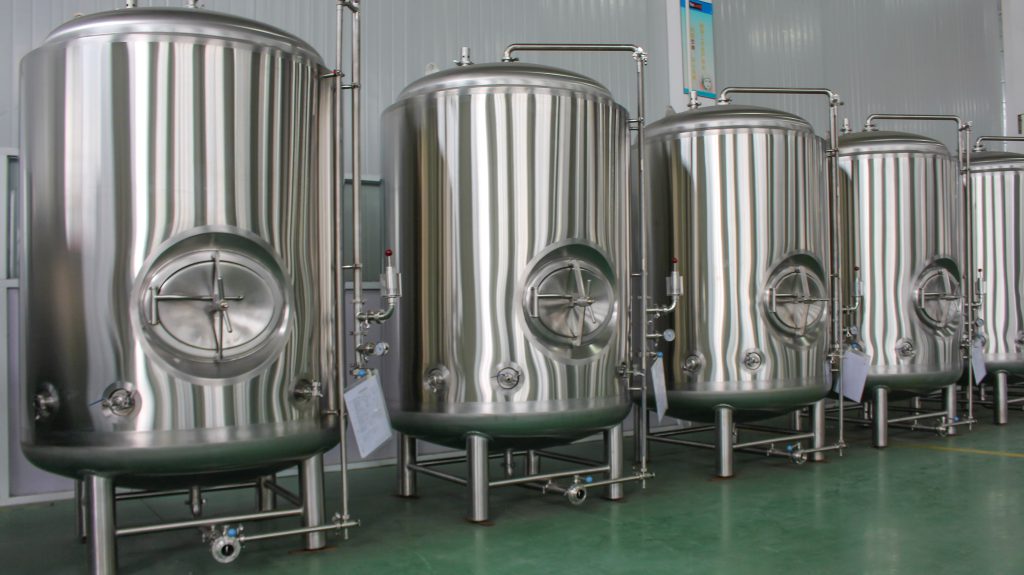Introduction

In the world of beer brewing, the role of brite tanks is crucial for achieving exceptional clarity and quality in the final product. Understanding how these tanks operate and their impact on beer is essential for brewers aiming to deliver consistent and superior brews to their customers.
What are Beer Brewing Brite Tanks?
Beer brewing brite tanks serve as the final destination for beer after fermentation and conditioning. These vessels are designed to clarify and carbonate the beer before it is packaged for distribution. Brite tanks are equipped with specialized features such as temperature control, carbonation stones, and sampling ports, all of which contribute to the quality of the final product.
How Beer Clarity is Improved by Brite Tanks
One of the primary functions of brite tanks is to enhance beer clarity. During the conditioning phase in these tanks, residual yeast and other particles settle out of the beer, resulting in a clearer and more visually appealing product. This process is facilitated by the conical shape of the tank, which promotes sedimentation, and the ability to carefully control temperatures to encourage yeast flocculation.
Carbonation Process in Brite Tanks
Carbonation is another critical aspect influenced by brite tanks. Brewers have precise control over the carbonation levels through the use of carbonation stones or spunding valves. This ensures that the beer reaches optimal carbonation levels suitable for its style, enhancing both mouthfeel and flavor profile.
Maintaining Quality Throughout the Brewing Process
Ensuring beer quality is a top priority throughout the brewing process. Brite tanks play a significant role in maintaining the integrity of the beer by providing a controlled environment free from contaminants. Brewers meticulously clean and sanitize these tanks to prevent any off-flavors or spoilage organisms from affecting the final product.
Monitoring and Sampling
Throughout the conditioning phase, brewers regularly monitor the beer’s progress using sampling ports. These samples are analyzed for clarity, flavor, and carbonation levels, allowing adjustments to be made if necessary. This attention to detail ensures that the beer meets the desired specifications before it is packaged and distributed.
Environmental Impact and Sustainability
Beyond their functional benefits, brite tanks also contribute to sustainability efforts within the brewing industry. By optimizing the clarity and quality of beer, breweries can reduce product waste and improve overall resource efficiency. This aligns with broader industry trends towards environmental responsibility.
Comparison of Beer Brewing Brite Tank vs. Fermenters

Here’s a comparison beer brewing brite tanks and fermenters, highlighting their respective roles and equipment used in the brewing process.
| Feature | beer brewing brite tank | Fermenters |
|---|---|---|
| Purpose | Clarifying and carbonating beer | Primary fermentation of beer |
| Shape | Typically conical for sedimentation | Varies; often cylindrical or conical |
| Equipment | Carbonation stones, sampling ports | Airlocks, temperature control |
| Duration of Use | Short-term (days to weeks) | Longer-term (days to weeks) |
| Use in Brewing Process | Final stage before packaging | Initial stage of fermentation |
Conclusion
In conclusion, beer brewing brite tanks are indispensable tools for enhancing beer clarity and quality. Their role in the final stages of the brewing process ensures that brewers can deliver consistent and exceptional products to consumers. By understanding the mechanics of brite tanks and their impact on beer, breweries can elevate their brewing practices and meet the high expectations of today’s discerning beer enthusiasts.
FAQ
Q: What is the difference between fermenters and beer brewing brite tanks?
A: Fermenters are used for primary fermentation, while beer brewing brite tanks are used for conditioning and clarifying beer before packaging.
Q: How long does beer typically stay in a brite tank?
A: The duration varies depending on the beer style and desired characteristics but typically ranges from a few days to a few weeks.
Q: Can brite tanks improve the shelf life of beer?
A: Yes, by clarifying and stabilizing the beer, brite tanks contribute to extending its shelf life.
Q: What maintenance is required for brite tanks?
A: Regular cleaning and sanitization are crucial to prevent contamination and maintain beer quality.

